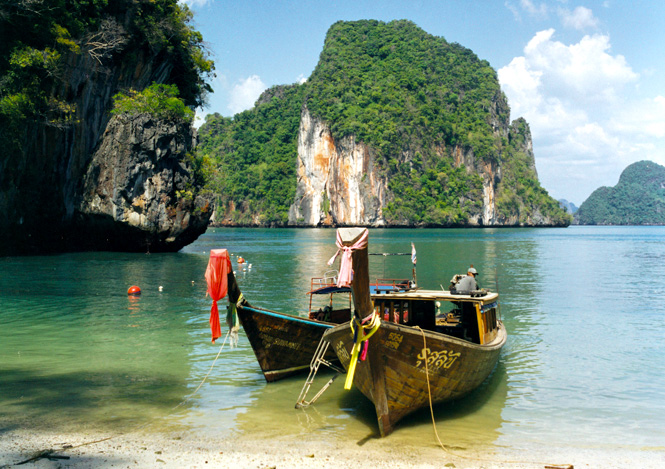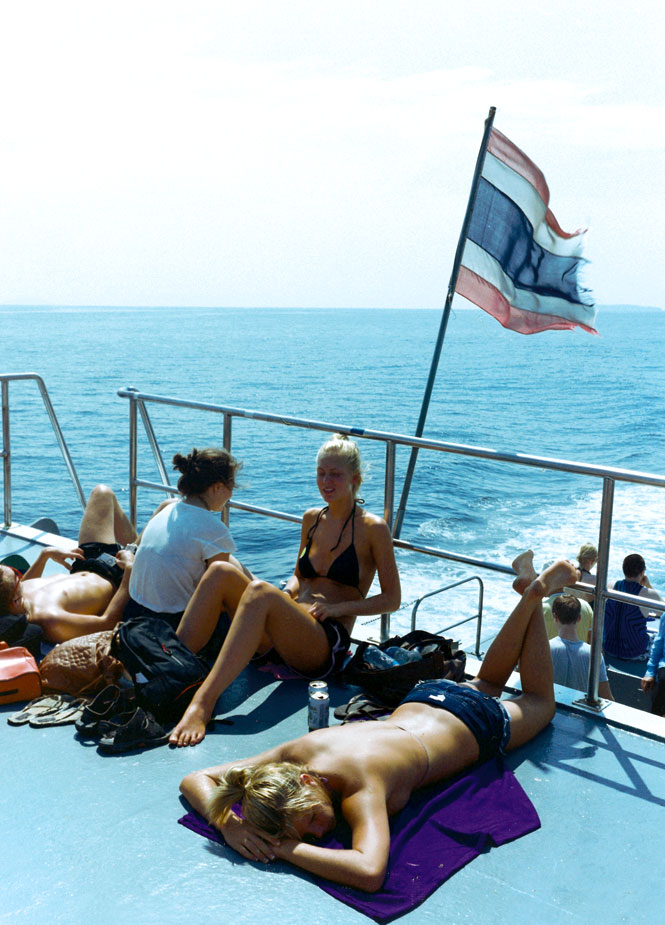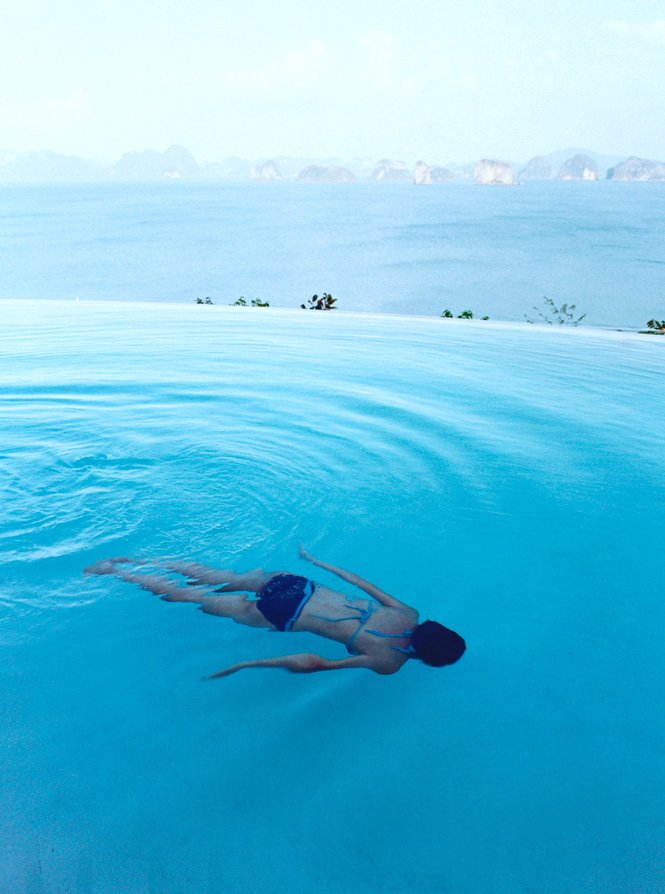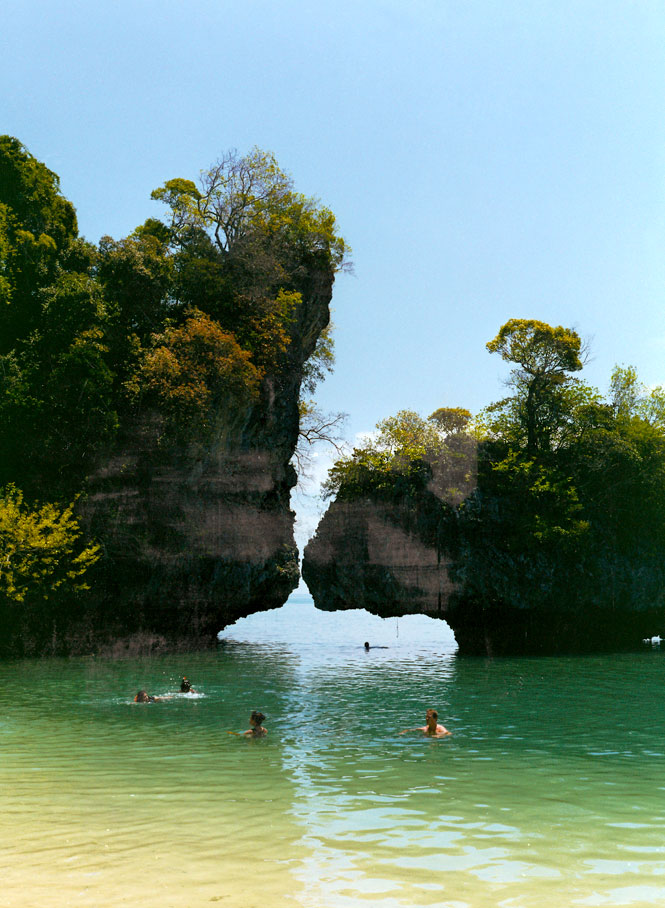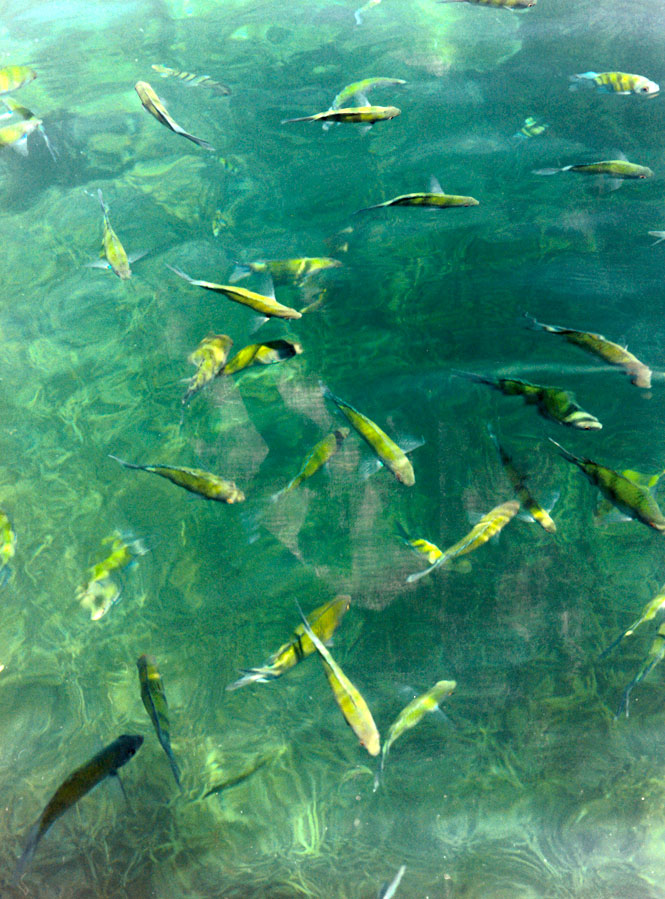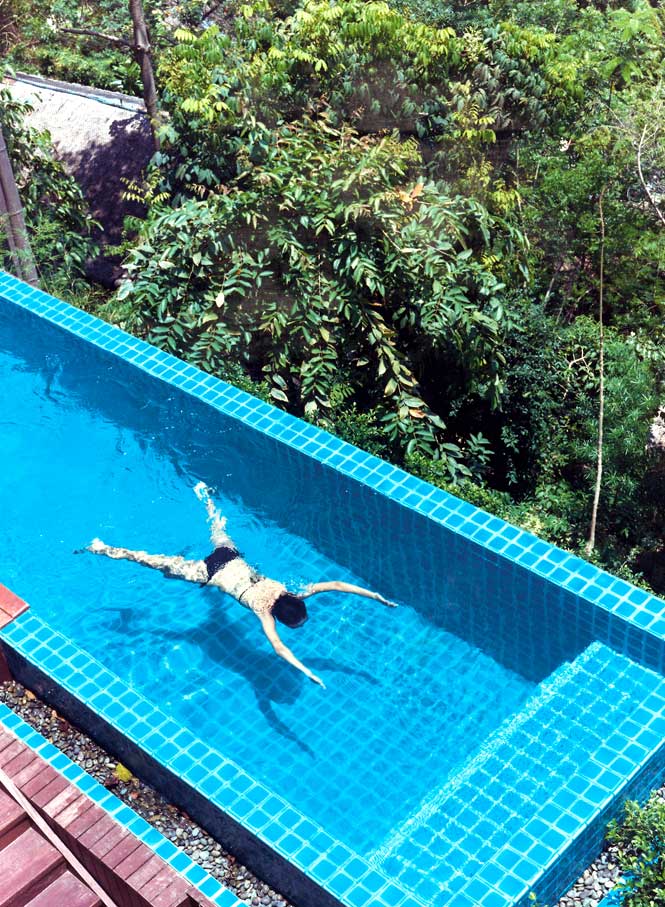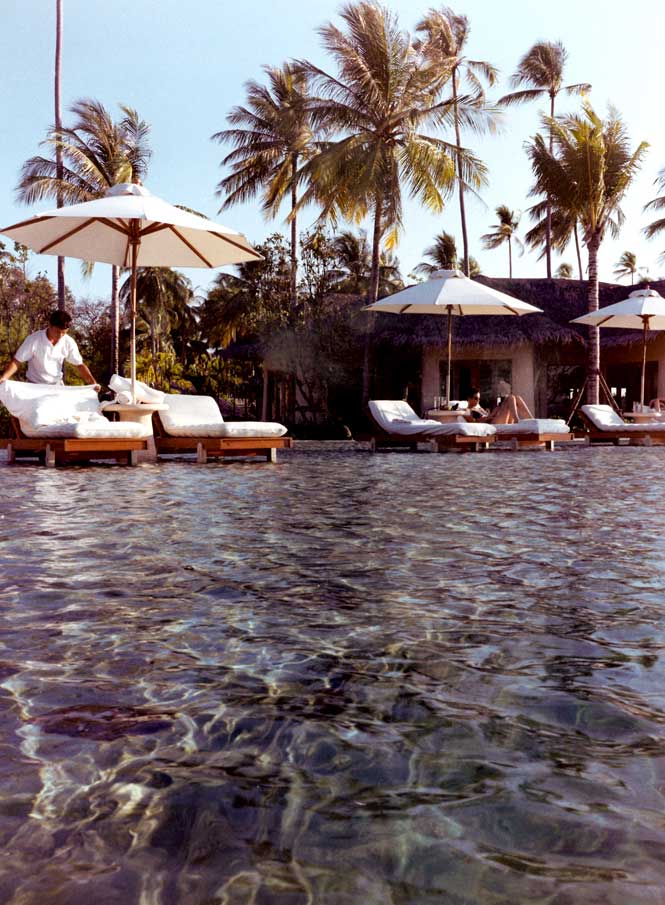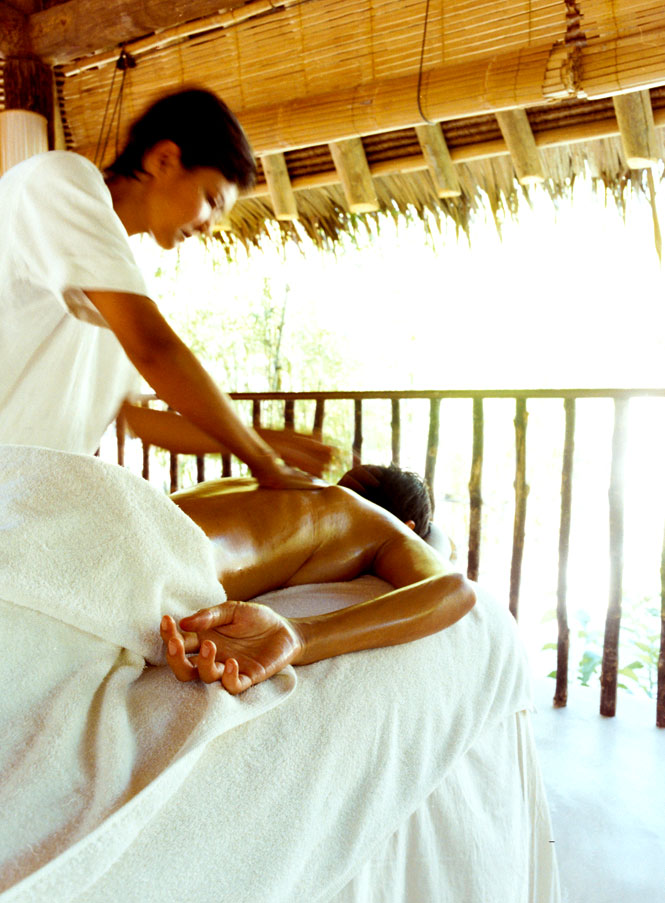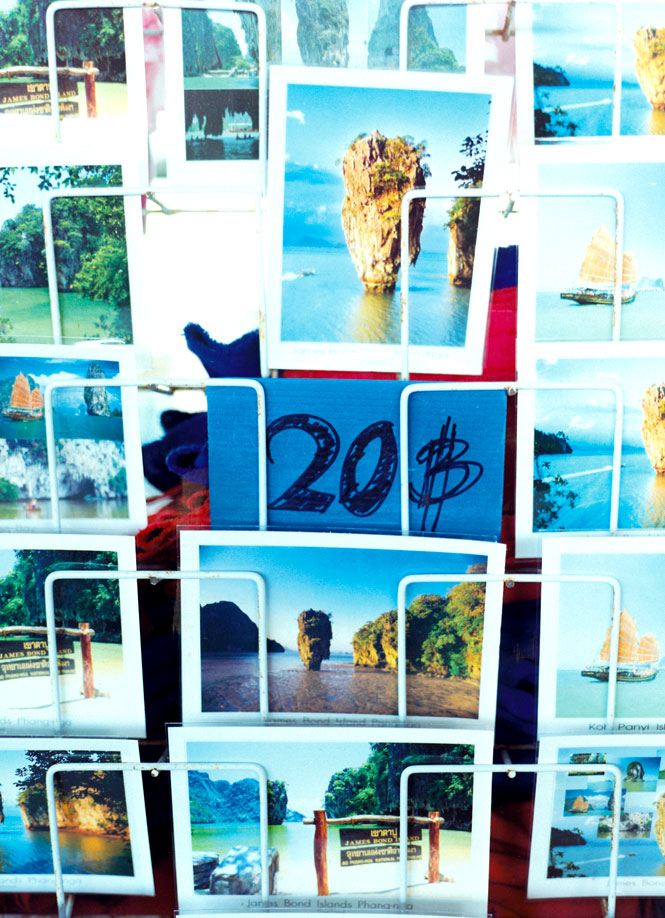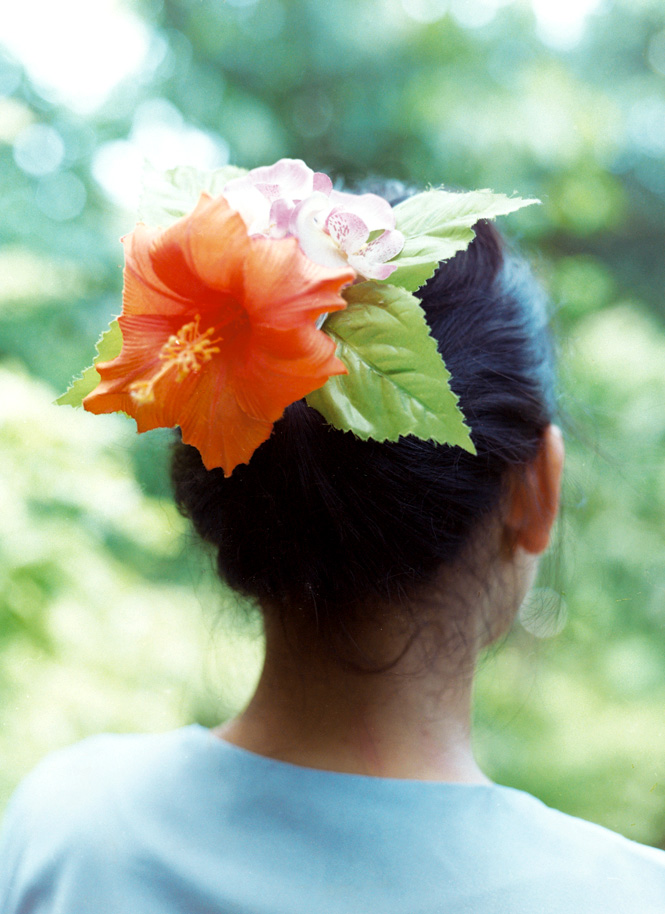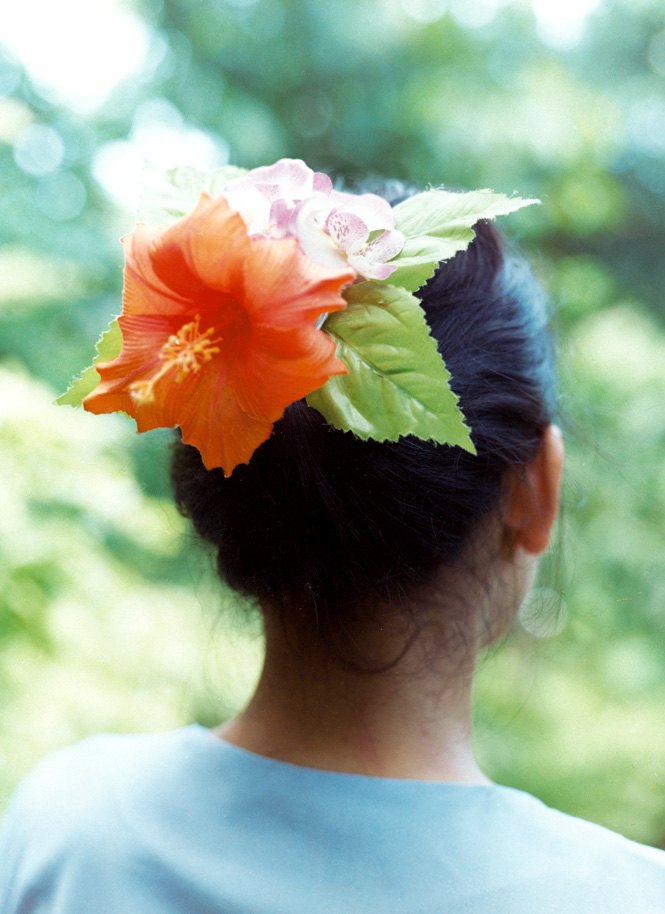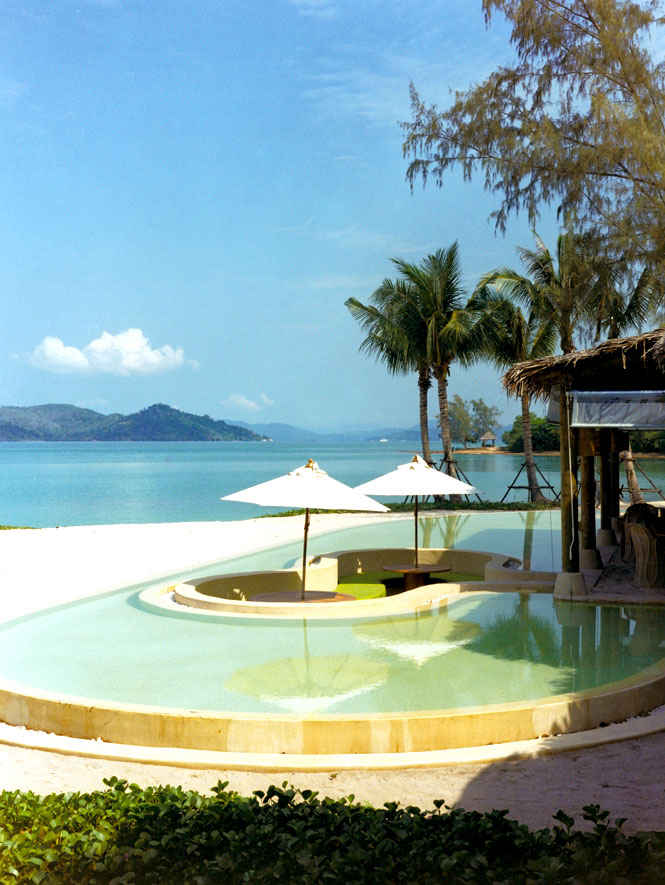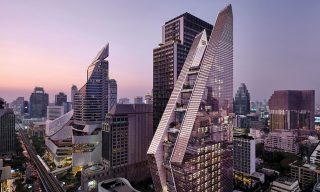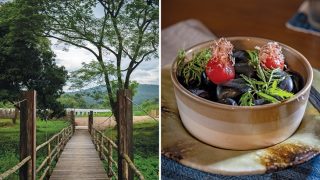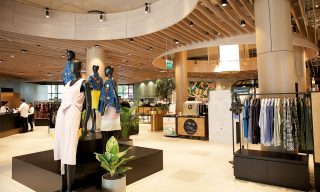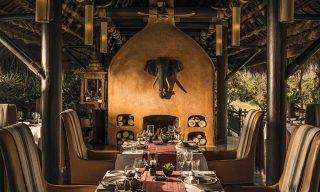Above: A cove on Koh Lading.
Island-hopping among the picturesque limestone outcrops—and luxurious new resorts—of Thailand’s Phang-nga Bay
By Christopher R. Cox
Photographs By Christopher Wise
A decade ago, I was browsing a rotating postcard display in Bangkok when a small vision stopped me in mid-turn. There, in laminated, 10- by 15-centimeter glory, was an aerial view of a near-deserted Thai island—a masterpiece of jungle-clad limestone peaks exploding from a deep-blue sea.
“Koh Hong, Krabi” was the postcard’s only caption. I’d never heard of Koh Hong, and had only a vague notion of Krabi. I bought the card anyway, never intending to mail it. Instead, I pinned it to the cubicle of the Boston newsroom where I worked. There it remained for years, gradually curling and fading, but steadfastly fulfilling my daydreams of escape. The weather might be dismal or my boss on the warpath, but at least I could take scenic solace: somewhere east of Phuket was my fantasy island.
The picture went with me when I left the paper, though the journey remained deferred. Then fate, or at least a magazine editor, intervened to send me to southern Thailand’s Phang-nga Bay, the very realm of Koh Hong. Of course, I packed along the old postcard, with the intention of finally mailing a gloating note from Thailand.
As I head by boat into a seascape studded with surrealistically sculpted islands, I realize that photographs can’t do justice to Phang-nga Bay. As with Vietnam’s Halong Bay, the foundation of this wondrous beauty is limestone. Technically known as karst, this rock was originally the top edge of an ancient coral reef that was compressed under layers of sand and clay, and then pushed up through the sea’s surface by geological forces approximately 75 million years ago. Eons of rainwater eventually eroded the sand and clay, leaving behind precipitous, wildly shaped islands like Khao Tapu (“Nail Mountain”). Better known as James Bond Island for its striking cameo in the 1974 film The Man With the Golden Gun, the stony spike did more to popularize Phang-nga than any postcard. Other movies, including a second Bond flick (Tomorrow Never Dies) and the screen adaptation of Alex Garland’s dystopian backpacker fantasy, The Beach, also used these enchanting islands. Some things just cannot be replaced by CGI effects.
In 1981, the Thai government created the 400-square-kilometer Phang-nga Bay National Park, preserving Khao Tapu and 40 other outcrops, hectares and hectares of coral reefs and seagrass beds, and part of the largest primary mangrove forest remaining in Thailand. That protection, coupled with the park’s proximity to Phuket, has made Phang-nga Bay a popular day trip for boat tours. However, the vast majority of visitors bolt from Phuket’s piers to Khao Tapu and never set foot on another island. While they see the landmark, they miss out on a landscape every bit as stunning —and far more seductive—than the famed film location.
That’s slowly changing. As development sweeps across Phuket, solitude seekers are venturing farther east into Phang-nga Bay in search of chill-out getaways. What they discover are pristine islands with secret nooks and crannies that are perfect for exploring by boat or kayak, alongside a handful of Muslim fishing settlements that have been bypassed by industrial-scale tourism.
The most distinctive natural features of the bay’s islands are their hidden, interior lagoons. Known as hong (literally, “room”), they were scooped out of the limestone by tens of millions of years of water erosion. Phang-nga has more than 10 of these spectacular voids. Some hongs are connected to the sea by narrow channels and can be accessed by longtail boat. Others are far more sequestered and can only be seen by helicopter, or by squeezing through long, narrow, pitch-black sea caves inside a small kayak.
Which is why I’m inside the Bat Cave on the west coast of Koh Panak, an island with five hongs that is halfway between Phuket and Khao Tapu. Fishermen have known about these caves for generations; only in the last 20 years, starting with the tour company Sea Canoe Thailand, have the passages been open to visitors.
While fishermen can’t get their boats through the caves, Sea Canoe’s inflatable, low-profile kayaks are ideal. Along with guide Suriyah “Ben” Yuhkontarapirng, I paddle past a troop of crab-eating macaques and into the cave, which grows dim as we wind our way inside the mountain. A flashlight helps us avoid bumping into sharp, oyster-covered walls. It also illuminates slabs of flowstone —a waterfall-like rock formed when limestone-saturated water evaporates—as well as hundreds of insect-eating bats roosting on the cave’s ceiling. Soon, our progress is halted; water laps against the top of the narrowing tunnel.
“Now we wait for the tide to fall a little bit,” Ben says.
Within 10 minutes, a crack of daylight brightens the cave and the stench of bat guano is dispelled by a fresh breeze. The kayak sighs as Ben deflates it, lowering us farther into the water. We need to limbo beneath the rocky overhang; clearance is less than 40 centimeters.
“Lay down and close your eyes,” Ben advises. I settle back, and the soft-sided boat envelops me like a wet shroud as the stone ceiling passes just centimeters above my face. Sea caves are not for claustrophobes. A few moments later, I’m blinking skyward in brilliant sunlight. Steep, 200-meter-tall cliffs surround the empty hong. Enormous trees drape the slopes, their boughs brimming with epiphytes, while a few gigantic mangroves rise from the still, milky-blue waters of the lagoon. It is an utterly virginal Lost World; I half expect to see pterodactyls flying overhead. Instead, Ben points out a dozen prehistoric-looking Oriental pied hornbills and one dinosaur-like monitor lizard.
We have the secret space to ourselves for half an hour before the silence is broken by another arriving tour group. Their company uses cheaper, molded-plastic boats and must wait for the tide to drop much farther before negotiating the sea cave’s chokepoint. When we emerge into the open sea again, four large tour boats are anchored off the mouth of the Bat Cave and are putting dozens of kayaks and scores of tourists in the water.
“It looks like the Floating Market,” sniffs Ben, referring to the famously clogged and chaotic attraction outside Bangkok. Phang-nga’s hongs are becoming a popular eco-excursion, with more than 10 outfitters offering trips of varying cost and quality. The Thai authorities have yet to set a cap on these companies or to limit capacity inside the caves and lagoons, with predictable results: too many boats in too little space.
“They have problems sometimes with traffic in the caves,” admits Soonthon “Mut” Sagulsan, Sea Canoe’s co-founder. “The water comes up and the window closes. People are stuck for at least four or five hours inside the hong, waiting for the tide to go down … I just feel sad about that, about the bay, but we don’t know what to do.”
The traffic in the sea caves and hongs pales in comparison with that along the shores of Khao Phing Kan, where a daylong procession of boats disgorges day-trippers who come to get a snapshot of Khao Tapu, the exclamation point on a small cove on the island’s west side. There’s no denying the pinnacle’s elegance; on the day of my visit, it’s serving as a backdrop for a photo shoot of French beauty queens. Nor is there any way to overlook the cash-cow status of Khao Phing Kan, a geological wonder in its own right—half the mountain has sheared away cleanly and leans against the original peak. (It’s actually this bit of real estate that served as the lair of Bond villain Scaramanga.) Foreign tourists must pay a 200-baht admission (about US$6) to visit the island, where the narrow, sandy beach with the best views of Khao Tapu is overrun with souvenir stands pitching T-shirts, seashells, and shark’s-tooth necklaces.
Bill O’Leary, a bluff Australian who manages Amancruises and has lived in Thailand for nearly 20 years, takes a pragmatic view of such commercialization. “Almost all the islands in the bay are protected,” he says. “[But on Khao Phing Kan] they’ve allowed hawkers to set up. They’ve basically sacrificed that island.”
O’Leary, who also authored Andaman Sea Pilot, the definitive cruising guide to the region, believes Phang-nga’s precipitous topography will save it from overdevelopment. “The farther you get north, the steeper the karsts become,” he explains. “There’s no way you could build on them anyway.”
Above from left: A Zeavola pool villa; the Six Senses Destination Spa’s main swimming pool; enjoying a massage at the same resort; James Bond Island postcards.
The lone settlement near the head of the bay is the Muslim community of Koh Panyee. Nestled at the base of a sail-like limestone tower rising from a mangrove-rimmed estuary, the village is built almost entirely on stilts over the shallows; the single hectare of level land holds a cemetery and gold-domed mosque. Settled by fisherfolk, Koh Panyee has become a busy luncheon stop for tourists to James Bond Island. An unbroken row of overwater eateries lines the east side of the village, backed by souk-like passages selling the usual souvenir bric-a-brac. Several local women tote diaper-clad gibbons, hoping to charge visitors for a bizarre photo op.
Wandering around, I encounter a small teashop and a grade school complete with a built-on-stilts playground. Many of the raised, tidy homes are decorated with hanging plants and birdcages full of chatty red-whiskered bulbuls. It’s a hospitable enough place, though it doesn’t have much in the way of overnight accommodation. For that, more and more travelers are heading to a substantially larger island of about 5,000 Muslim fishermen and rubber tappers.
Above from left: the Muslim fishing village at Koh Panyee is built on stilts above the shallows; cruising among the karsts of Phang-nga Bay; a Koh Panyee Schoolroom; local ea life.
With no traffic lights and just a single ATM, Koh Yao Noi (“Little Long Island”) has begun to attract stay-over visitors who have wearied of the bright lights and hubbub of Phuket, a 30-kilometer ferry ride to the west. Says Gavin Pereira, a Singapore native who first arrived here five years ago, “This is not another Phuket or Samui. It’s different. Right now we don’t have the noisy bars, we don’t have the hookah joints, and we don’t have touts. People are extremely friendly. It’s an unusual environment.”
Most travelers opt for the island’s east coast, which is dotted with simple bungalows and cottages beside pebbly, casuarina-shaded beaches that gaze upon an archipelago of limestone monoliths. “It’s a beautiful view,” says Mut, a Koh Yao Noi native, “but not a beautiful beach.”


